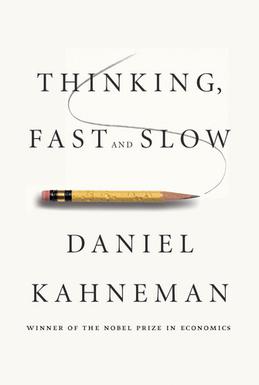Should you write fast, slow, or a bit of both? Emulate a cheetah, a snail, or switch from one to the other?
I got to pondering this topic when I heard about the book Thinking, Fast and Slow by Daniel Kahneman. In the book, he discusses both of the ways thoughts form in our brains. He calls them System 1 and System 2.
In System 1, our thoughts are instant, emotional, and unconscious. This is what Malcolm Gladwell described in his book Blink: The Power of Thinking Without Thinking. In System 2, our thoughts take time to form and are logical, rational, and less frequent.
Kahneman’s book is not primarily about writing, but others have extended his thoughts into that field. Author Joe Bunting claims that he (Bunting) too easily slips into System 2, so offers five tips to stay in System 1 and therefore crank out prose faster.
Author Anne Janzer renames System 1 as the Muse and System 2 as the Scribe. She advocates using each mode to maximum advantage, and being open to both systems. Wait…did she call the slow one Scribe? Poseidon’s Scribe will try not to take offense.
Just to be different, I’ll call the two systems Cheetah Mode and Snail Mode.
In Cheetah Mode, you’re trying to write in the flow. If you get stuck for a word or need to research something, just make a note to do that later and move on. Let nothing interrupt the cascade of words.
Cheetah Mode has the advantage of being prolific. You can really churn out stories fast. In that mode, too, you can more easily sustain an emotion and achieve consistent tone throughout a story.
However, the Cheetah makes mistakes—grammar goofs, cliches, stereotyped characters, plot problems, unexplained motivations, illogical events, unclear descriptions, etc.
Snail Mode has the advantage of careful attention to detail. It’s what writers call their internal editor. In this mode you can spot and correct your errors, ensure your story is researched and credible, add new insights that occur after careful thought, and render your story polished and readable.
But Snail Mode contains a trap—the perfectionism trap. There’s always more you can do to improve your story, and you can improve it all the way into an eternal spiral of incompletion.
When should you use each mode? I suggest, for your first draft, let the cheetah sprint. In all subsequent drafts, I’d bring out the snail and let it slowly roam through the text, especially the beginning and ending of the story.
As the snail wends its dawdling and deliberate way, keep the cheetah nearby. Let it tap the snail’s shell every now and then, asking, “You done yet? That story’s good enough to submit now. I’m ready to let loose with the next tale.” Any of Bunting’s techniques might work for this.
As Janzer suggests, you should be able to flit from cheetah to snail and back with ease, and be equally comfortable in either mode.
Not to be confused with Anne Janzer’s System 2 Scribe, I’m—
Poseidon’s Scribe



